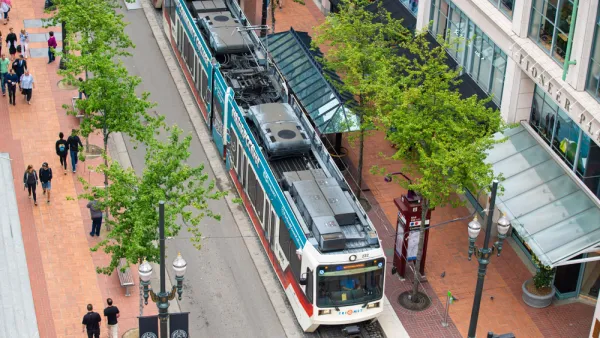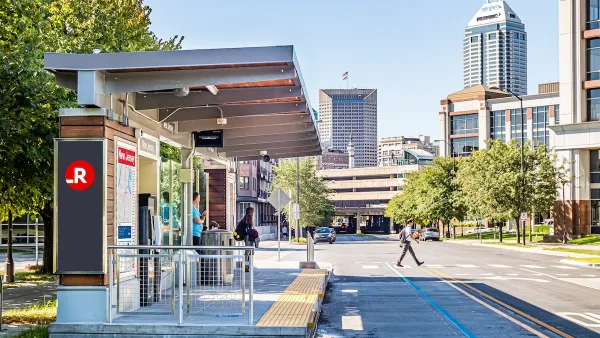In a planning area encompassing Hamilton, Hendricks, Boone, Johnson, Morgan, Shelby and Hancock counties in Indiana, streets with no sidewalks outnumber streets with sidewalks by more than two to one.

Kellie Hwang reports from Central Indiana, where a recently released a pedestrian infrastructure map in connection with an ongoing Regional Pedestrian Plan [pdf] effort lays out the pedestrian risk in and around the city of Indianapolis.
"On this map of Central Indiana, there's a collection of bright green lines in the center, with more scattered throughout. The rest of the map is a glaring web of bold, red angled lines protruding out of the Indianapolis metro area," reports Hwang.
Green indicates streets with existing sidewalks and other pedestrian infrastructure. Those kinds of streets total 1,704 miles in the region. "The red lines show 3,748 miles worth of gaps where pedestrian facilities don't exist, either on one side or both sides of the road," according to Hwang.
The Indianapolis Metropolitan Planning Organization published the map after a year and a half of into the Regional Pedestrian Plan, which updates the original version of the plan, completed in 2006.
FULL STORY: This map reveals a lack of pedestrian-safe infrastructure in Central Indiana

National Parks Layoffs Will Cause Communities to Lose Billions
Thousands of essential park workers were laid off this week, just before the busy spring break season.

Retro-silient?: America’s First “Eco-burb,” The Woodlands Turns 50
A master-planned community north of Houston offers lessons on green infrastructure and resilient design, but falls short of its founder’s lofty affordability and walkability goals.

Delivering for America Plan Will Downgrade Mail Service in at Least 49.5 Percent of Zip Codes
Republican and Democrat lawmakers criticize the plan for its disproportionate negative impact on rural communities.

Test News Post 1
This is a summary

Test News Headline 46
Test for the image on the front page.

Balancing Bombs and Butterflies: How the National Guard Protects a Rare Species
The National Guard at Fort Indiantown Gap uses GIS technology and land management strategies to balance military training with conservation efforts, ensuring the survival of the rare eastern regal fritillary butterfly.
Urban Design for Planners 1: Software Tools
This six-course series explores essential urban design concepts using open source software and equips planners with the tools they need to participate fully in the urban design process.
Planning for Universal Design
Learn the tools for implementing Universal Design in planning regulations.
EMC Planning Group, Inc.
Planetizen
Planetizen
Mpact (formerly Rail~Volution)
Great Falls Development Authority, Inc.
HUDs Office of Policy Development and Research
NYU Wagner Graduate School of Public Service





























